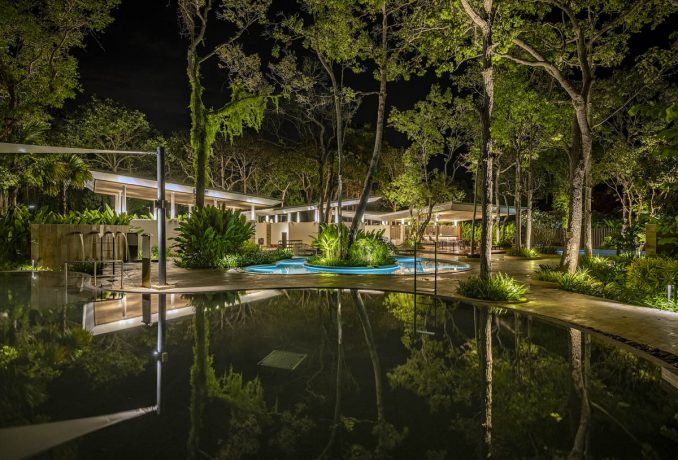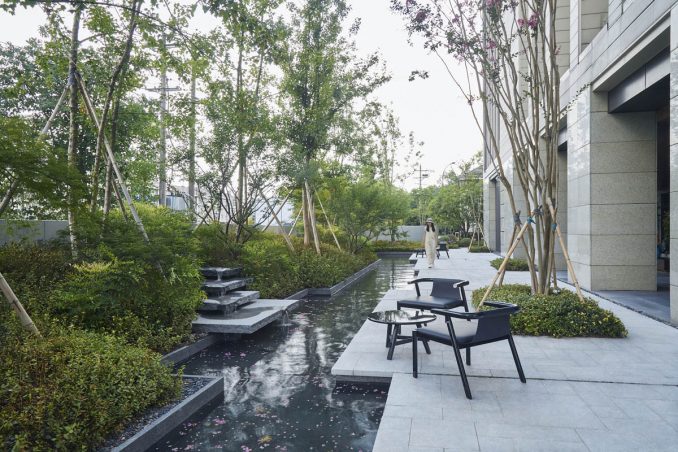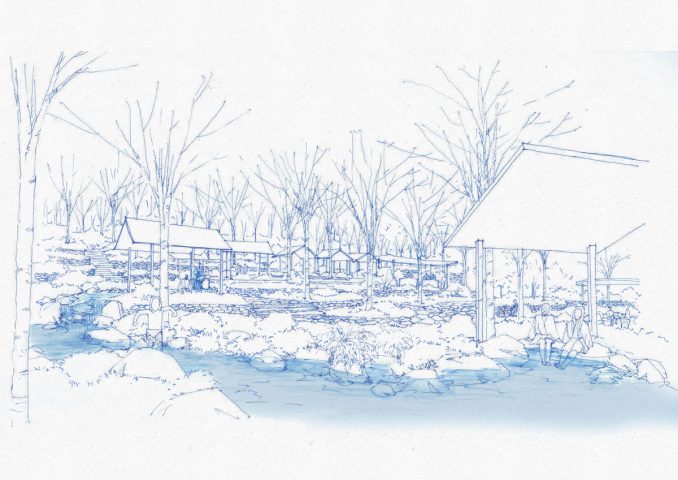
Recently WLA was able to take the change to profile Chen Rong (CR) and her thoughts about landscape architecture in China. Chen Rong graduated from the School of Architecture and Environmental Design of China Academy of Art in 2015. She works for TOA Landscape Architecture as a senior landscape architect and has been in the landscape design field for eight years. Chen Rong has been part of various types of projects, from small-scale private gardens, relatively large hotels, residential areas, industrial parks, commercial complexes, and public parks to urban renewal projects. However, my main projects are in the hospitality landscape, such as Hangzhou uptown Indigo Hotel, Nanjing Garden Expo Voco Hotel, Binh Chau Minera Hotel, and other projects in China and Southeast Asia.

WLA: Why did you become a landscape architect?
CR: To be honest, when I chose this field at university, I didn’t know much about what is landscape design. After graduating from university, I naturally joined the landscape realm as a landscape architect. A major turning point was my second year’s vacation in my career. When I returned to my hometown, Liling, which is a lovely small suburb town in Hunan province, China, I saw the beautiful scenery there carrying my childhood memories that had been destroyed due to uncontrolled and unordered development. I was completely shocked and frustrated about what was happening in the countryside. It was the first time I felt the strong responsibility of being a landscape architect, since then, I decided to be a landscape architect who will protect our beautiful nature and land.

WLA: What is your design ethos/methodology?
CR: I think a landscape architect is like a coordinator with a certain aesthetic proposition, and empathy is a very important quality for our profession. It is not just empathy for end users but also empathy for the land and its’ context, culture, past and future, and of course, empathy with the clients and other professions involved as well. We need to explore the site’s potential and then connect and integrate the needs and the various aspects of the design most coherently and appropriately. The landscape is something that people perceive collectively, like where I grew up, it’s something that people identify with culturally and personally and emotionally. This is what makes landscape so powerful, experiencing it can pull people together and inspire them to work together to make a change. In the end, each project is unique. I think it’s very challenging to make it happen, and I’m fully committed to it.
WLA: How has the landscape architecture profession changed in China?
CR: When I entered this realm, the Chinese landscape market was saturated, and the entire industry was already developed and improved. However, in the past ten years that I experienced, I felt there would be some drawbacks due to the country-wide rapid and urgent development needs. The design of most projects tends to be homogeneous and lacks localization. Chinese designers and developers seek the excessive consumption of illusion in pursuit of unconventional and visual stimulation that causes landscapes to become a “spectacle”. Generally speaking, they are less concerned about the value of the site and the real needs of traditional users, turning landscapes into sort of fashionable commercial products. At the same time, I strongly feel this also causes non-renewable consumption of designers’ ability, innovation and physiology. In my opinion, many young Chinese architects, and designers are feeling the excessive output and lack of timely input. But I think things have changed in recent years in a better way. More and more good projects that focus on land, nature, and time have appeared. This excited me. I believe that the Chinese landscape field will gradually return in a good direction.
WLA: How can landscape architects better connect people with nature?
CR: I have lived in the countryside since I was a kid, and most of my distinct childhood memories are related to nature, so I always feel intimate and trust in nature. I think it may be necessary to get in touch with nature more, encounter nature in different regions, experience the charming charm of nature, and respect and believe in the power of nature. Only by believing in nature can we connect people with nature better. Believe in the power of nature; believe in the power of faith.
Thank you to Chen Rong for taking the time to answer WLA’s questions.
